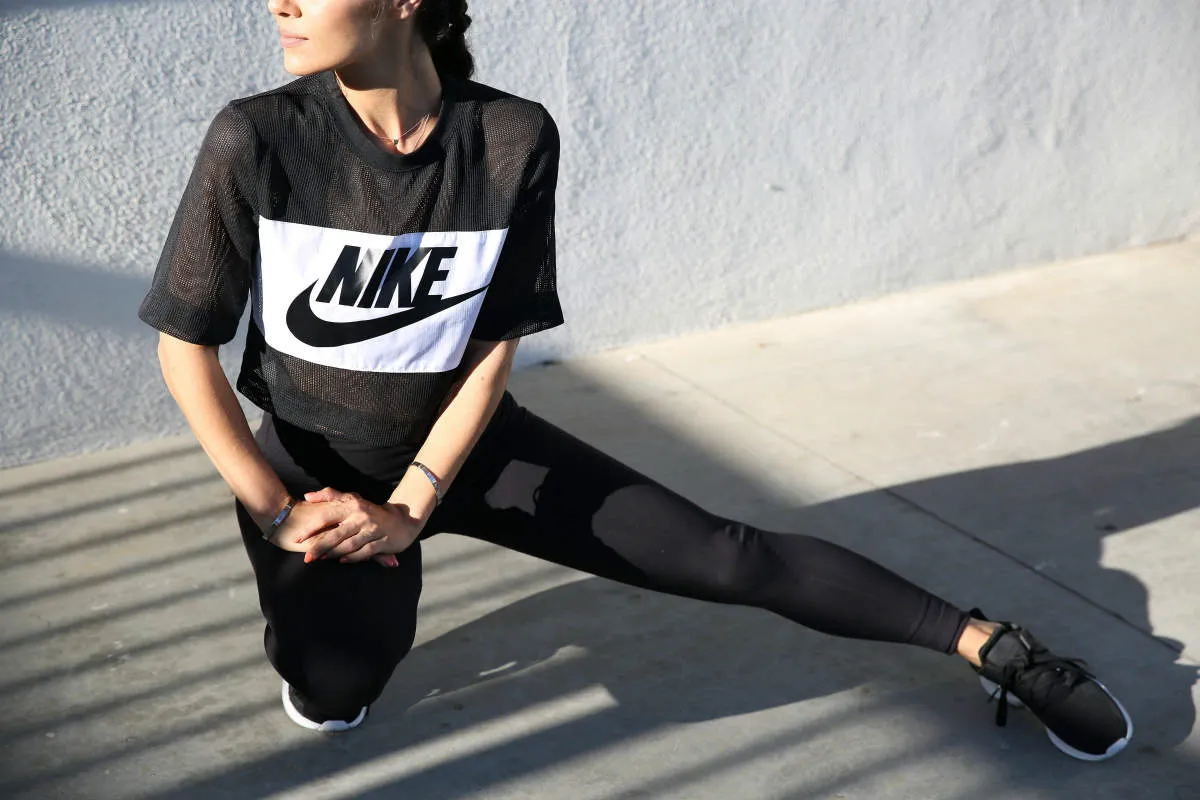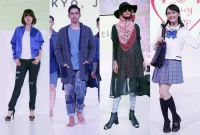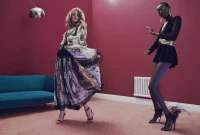Revolutionizing Your Style: Fashion Trends that Are Changing the Game
Emerging Fashion Movements

The fashion industry is constantly evolving, and with it, new trends and movements emerge. These fashion movements revolutionize personal style, bringing about refreshing changes to the way we express ourselves through clothing. Let’s delve into some of the latest fashion trends that are changing the game:
1. Sustainable Fashion
In recent years, there has been a growing awareness of the environmental impact of the fashion industry. As a result, sustainable fashion has gained traction. Designers are now focusing on creating clothing using eco-friendly materials, promoting fair trade, and supporting ethical production practices. This movement encourages consumers to make conscious choices that benefit both the planet and the people involved in the production process.
2. Genderless Fashion
The traditional boundaries between men’s and women’s fashion have been blurred by the rise of genderless fashion. This movement challenges societal norms and stereotypes by offering clothing options that are not limited to specific genders. Designers are embracing fluidity and providing versatile pieces that can be worn by anyone, regardless of their gender identity.
3. Body Positivity
The body positivity movement has gained significant momentum in the fashion industry. It promotes inclusivity by celebrating diverse body shapes, sizes, and skin tones. This movement encourages fashion brands to embrace models of all body types, making fashion more accessible and empowering for everyone.
4. Slow Fashion
In contrast to fast fashion, the slow fashion movement emphasizes quality and longevity. It encourages consumers to invest in well-made, timeless pieces that can be worn for years, rather than succumbing to the constant cycle of trends. Slow fashion aims to reduce waste and promote a more sustainable approach to consumption.
5. Digital Fashion
The advent of digital fashion has opened up a whole new world of possibilities. This movement combines technology and fashion to create virtual clothing and accessories that can be worn in the digital realm. With the rise of social media and virtual reality, digital fashion allows individuals to experiment and express themselves creatively without the constraints of physical garments.
These emerging fashion movements are revolutionizing the way we define and embrace personal style. Whether it’s by choosing sustainable options, breaking gender barriers, promoting body positivity, adopting slow fashion practices, or diving into the digital realm, fashion trends are constantly evolving to accommodate the ever-changing needs and desires of individuals.
The Fusion of Tech and Fashion
Technology and fashion have embarked on a remarkable journey of mutual collaboration, paving the way for groundbreaking innovations and revolutionizing the world of style. As technology continues to advance, its integration into the fashion industry has led to unprecedented possibilities and enhanced consumer experiences.
One prominent way in which technology and fashion are merging is through wearable tech. From smartwatches that track fitness levels to virtual reality headsets that create immersive fashion experiences, these wearable devices not only serve a functional purpose but also add a touch of futuristic flair to our outfits.
Moreover, the development of smart fabrics has opened up new avenues for creative expression. With embedded sensors and microprocessors, these fabrics can adapt to various climates, monitor health vitals, and even charge electronic devices wirelessly. Fashion designers are harnessing such advancements to create garments that seamlessly blend style and functionality.
In addition to wearables and smart fabrics, technology has also revolutionized the way we shop for fashion. E-commerce platforms and mobile apps have made it easier than ever to discover the latest trends and make purchases with just a few clicks. Virtual fitting rooms allow customers to try on clothes virtually, eliminating the need for physical trials and reducing the environmental impact of fast fashion.
Furthermore, technology has given rise to sustainable fashion practices. With innovations like 3D printing and fabric recycling, designers can create eco-friendly and customizable pieces. The fashion industry is now increasingly focused on ethical production processes and reducing waste, thanks to technological advancements.
As we embrace the fusion of tech and fashion, our style becomes a reflection of our progressive mindset. The possibilities are endless, and the future of fashion promises even more exciting developments. So, get ready to embrace a new era of style as technology continues to shape and revolutionize the world of fashion.
Radical New Materials in Fashion
In the ever-evolving world of fashion, revolutionary new materials are paving the way for game-changing style. As designers and innovators push the boundaries of creativity, traditional fabrics are being left behind in favor of unconventional, sustainable, and futuristic materials that offer endless possibilities. These new materials not only enhance aesthetics but also support a more eco-friendly fashion industry.
Nanotextiles: Extraordinary Performance
Nanotechnology has introduced us to the world of nanotextiles, fabrics infused with tiny engineered particles. These materials possess extraordinary performance attributes, including moisture-wicking properties, UV protection, and even self-cleaning capabilities. Nanotextiles are redefining activewear and outerwear by providing enhanced comfort and functionality.
Biodegradable Fabrics: Sustainable Chic
In response to growing concerns about environmental impact, fashion is embracing biodegradable fabrics. Made from materials such as hemp, bamboo, and algae, these textiles break down naturally, minimizing waste and pollution. Biodegradable fabrics are not only sustainable but also offer unique textures and patterns, adding a touch of avant-garde to any wardrobe.
Lab-Grown Leather: Ethical Luxury
The fashion industry is revolutionizing the concept of luxury by turning to lab-grown leather. By cultivating animal-free leather in laboratories, designers can achieve the same look, feel, and quality as traditional leather while eliminating the need for animal cruelty. Lab-grown leather avoids the environmental toll associated with traditional leather production, making it a frontrunner in ethical fashion.
Recycled Materials: Thrifty Chic
Upcycling and recycling have become integral to sustainable fashion, with designers transforming discarded materials into stylish garments. From repurposed plastic bottles to reclaimed denim, recycled materials offer a unique and thrifty chic appeal. This trend encourages conscious consumerism while reducing waste and supporting a circular fashion economy.
Conductive Fabrics: Future Fashion
The future of fashion lies in conductive fabrics, which are woven with electrical components and circuits. These futuristic materials open up a world of possibilities, enabling integration with technology, such as interactive garments and wearable devices. Conductive fabrics blend fashion and functionality, bringing us closer to a truly connected and tech-savvy wardrobe.
The Evolution of Gender-Neutral Fashion
In recent years, the fashion industry has undergone a significant transformation, embracing gender-neutral fashion as a revolutionary movement. Traditionally, fashion was restricted by societal norms and expectations, categorizing clothing into strictly male or female. However, this limited perspective is rapidly changing, with fashion trends challenging the binary understanding of gender.
One notable aspect of the gender-neutral fashion revolution is the rise of androgynous style. This trend blurs the lines between masculinity and femininity by combining elements from both genders, creating unique and versatile looks. Designers now actively experiment with silhouettes, colors, and cuts that can be worn by individuals regardless of their gender identity.
Another significant development is the increasing popularity of unisex clothing lines. Brands are recognizing the demand for gender-neutral options and are designing collections that cater to a broader audience. This inclusive approach not only allows for more freedom of self-expression but also promotes diversity and acceptance within the fashion industry.
Additionally, gender-neutral fashion has sparked a movement towards sustainable and ethical practices. As consumers become more conscious of the impact of their fashion choices on the environment, minimalist and versatile pieces have gained popularity. Gender-neutral clothing often focuses on timeless designs that can be worn for multiple occasions, reducing the need for excessive consumption.
Furthermore, the evolution of gender-neutral fashion has played a crucial role in breaking down societal stereotypes. By challenging traditional norms, fashion has become a tool for promoting individuality and self-acceptance. This movement empowers people to express themselves authentically, regardless of societal expectations.
As the fashion industry continues to evolve, gender-neutral fashion is set to revolutionize the way we perceive style. It encourages inclusivity, individuality, and sustainability, creating a more diverse and accepting fashion landscape. So, whether you identify as male, female, or any other gender identity, embracing gender-neutral fashion allows you to revolutionize your style and truly express yourself.
Fashion Influenced by Global Cultures
Revolutionizing Your Style: Fashion Trends that Are Changing the Game
Fashion is a dynamic industry that constantly evolves, and one of the major influences on fashion trends today is the rich diversity of global cultures. From traditional garments to unique textiles and distinct patterns, the fashion world has been positively impacted by the global exchange of ideas and aesthetics.
One notable trend that has emerged is the incorporation of traditional elements from various cultures into contemporary fashion designs. Designers are drawing inspiration from cultures around the world, reinterpreting traditional clothing styles and infusing them into modern pieces. This fusion creates a unique look that combines the beauty of the past with the versatility of the present.
For instance, the vibrant colors and intricate embroidery of Mexican textiles are now prominently featured in dresses, blouses, and accessories. African prints, known for their bold patterns and geometric shapes, can be seen in skirts, tops, and even footwear. The intricate motifs of Indian textiles are also making a statement in fashion, adding a touch of elegance and sophistication.
Another significant influence is the rise of sustainable and ethical fashion practices inspired by global cultures. Many designers are now embracing traditional crafts and techniques, incorporating them into their designs as a way to celebrate cultural heritage while promoting eco-friendly fashion. By supporting artisans and using organic materials, fashion has become a vehicle for cultural preservation and environmental consciousness.
Furthermore, cultural diversity has sparked a rise in inclusivity within the fashion industry. Models from different ethnic backgrounds are now gaining visibility on runways, breaking the traditional beauty standards and showcasing a more accurate representation of global cultures. This positive shift is inspiring individuals with various backgrounds to embrace their own cultural heritage and express it through fashion.
The blend of fashion and global cultures is truly revolutionizing the way we approach style. It encourages creativity, celebrates diversity, and promotes sustainable practices. As fashion continues to evolve, we can look forward to more exciting collaborations and innovations that will shape the industry and empower individuals to express their unique identities through clothing.
The Future of Sustainable Fashion Practices
Fashion trends have always been dynamic, constantly evolving to cater to the changing tastes of consumers. However, in recent years, a new trend has emerged that goes beyond style and focuses on sustainable practices. Sustainable fashion is gaining traction and revolutionizing the industry, offering a glimpse into the future of clothing production and consumption.
One key aspect of sustainable fashion is the use of eco-friendly materials. Designers are increasingly opting for fabrics made from recycled or organic sources, reducing the reliance on harmful synthetic fibers. By incorporating materials such as organic cotton, hemp, and bamboo, the fashion industry is minimizing its environmental impact and promoting sustainable farming practices.
Another crucial element of sustainable fashion is ethical production. Many brands are now committed to fair trade and ensuring that their garments are made under safe working conditions. This movement acknowledges the importance of treating workers with dignity and respect, tackling issues like forced labor and exploitation head-on.
Additionally, sustainable fashion encourages timeless designs that are not subject to short-lived trends. By focusing on quality and durability, clothing items can have a longer lifespan, reducing the need for constant replacements. This approach promotes a shift from disposable fast fashion to a more thoughtful and conscious consumption pattern.
The future of sustainable fashion also lies in technology. Innovations such as 3D printing and fabric recycling techniques are revolutionizing the way clothes are made. These advancements enable designers to create customized pieces with minimal waste and maximize resource efficiency.
As consumers become more aware of the environmental and social impact of their choices, the demand for sustainable fashion is expected to grow. With increased awareness, education, and support from both consumers and the industry, the future of sustainable fashion practices looks promising, offering a more ethical and environmentally friendly alternative to conventional fashion.
Conclusion
In conclusion, fashion trends have been continuously evolving and revolutionizing the way we dress and express ourselves. From sustainable fashion to gender-neutral clothing, the industry is embracing change and challenging norms. By keeping up with these emerging trends, individuals can stay ahead of the fashion game and make a statement through their personal style.



